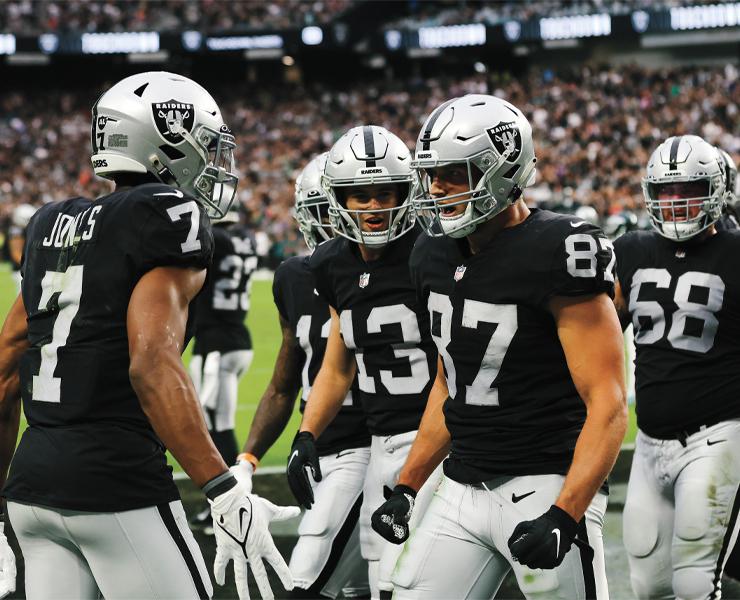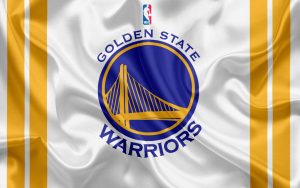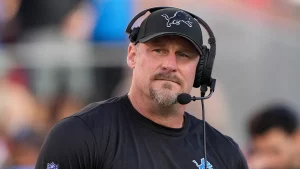
Josh McDaniels’ bad decisions lead to Raiders firing: What’s next?
The last image of Josh McDaniels as an NFL head coach will be from Monday night. Las Vegas Raiders receiver Davante Adams had gotten himself open for two long touchdowns in the second half against the Lions, only for hand-picked McDaniels favorite Jimmy Garoppolo to misfire on both his throws. The first, under heavy pressure from Aidan Hutchinson, landed 2 yards out of bounds. The second landed 2 yards past Adams’ fingertips. The star wideout went to the sideline, slammed his helmet on the bench and very visibly said he was tired of something I’ll summate as the Raiders experience.
Fast-forward to 24 hours later, and it turned out that Mark Davis was tired of that experience, too. The Raiders owner stunningly fired McDaniels and general manager Dave Ziegler on Tuesday night, ending the former Patriots coordinator’s head-coaching gig after 25 games, less than two seasons into a six-year contract. McDaniels went 9-16 as the Raiders’ coach, a step down from his 11-17 mark in 28 games with the Broncos (2009-10), where he was also fired halfway through his second campaign.
On the merits of their record and the season they’ve had so far, McDaniels and Ziegler did not deserve to go. They’ve been middling, sure, but plenty of coaches have done worse before improving. Davis didn’t fire Jon Gruden after he started 11-21 in his second gig with the Raiders. Kyle Shanahan was 10-22 across his first two seasons with the 49ers. Dan Campbell, who handed McDaniels his final loss, started his Lions career 4-19-1. He has gone 13-4 since then. Plenty of coaches have gotten off to slow starts and turned things around.
Instead, the case for firing McDaniels and Ziegler is more comprehensive. I’m not sure a coach and general manager have ever gotten as many of their big decisions wrong over the first two years of their tenure than the now-deposed Raiders pairing. Everyone makes mistakes, and it’s easy to use hindsight to correct calls, but many of the decisions they made looked foolish even in the moment. Running through them in chronological order gives us a brief history of the regime and why the pair is out in Las Vegas.
McDaniels inherits fool’s gold
Depending on how you view the roster McDaniels inherited, you could argue that Vegas’ collapse over the past two seasons has been even more dramatic than a middling win-loss record. The 2021 Raiders made it to the playoffs! Las Vegas won its last four games, including that famous Week 18 overtime game over the Chargers, to sneak into the postseason. There, it went down 20-6 to the Bengals before launching a comeback and getting in position for the game-tying score, only for Derek Carr to throw an interception on fourth-and-goal that ended Vegas’ season.
Before and after the loss, Raiders players stumped for interim coach Rich Bisaccia to get the job. Davis fired general manager Mike Mayock and hired McDaniels and Ziegler instead. Bisaccia went to the Packers to serve as their special teams coach.
The first mistake McDaniels and Ziegler made was the most important one: They didn’t do a good job of self-scouting. Yes, the Raiders were a 10-7 team that made it to the playoffs. But a closer look would have revealed something different.
As I wrote before the McDaniels hire, the Raiders were one of the league’s luckiest teams in 2022. They had gone 10-7 but had been outscored by 65 points. They had gone 7-2 in games decided by seven or fewer points. Their four-game winning streak to end the season had included wins over backup quarterbacks Nick Mullens and Drew Lock and Colts quarterback Carson Wentz, who had chosen not to be vaccinated against COVID-19 and came back from the COVID-19 list hours before that game. Their young core was mostly missing after years of terrible draft picks and trades during the Gruden/Mayock era. The Raiders needed to rebuild.
McDaniels and Ziegler disagreed. Their first big choice signaled what they felt about the roster. With the Broncos trading for Russell Wilson and the Chargers making splash deals by trading for Khalil Mack and signing J.C. Jackson in free agency, the Raiders clearly felt like they needed to make their own move to keep up in the AFC West arms race. Let’s start our look at the big decisions from the ill-fated regime there …
A chronology of bad decisions and bad football
March 18, 2022: The Raiders send first- and second-round picks to the Packers for Adams.
Taking over a Raiders team that had question marks about the offensive line and just about everywhere on defense, McDaniels sent his top two picks to Green Bay to acquire … a great wide receiver. The Raiders dealt for Adams and gave him a five-year, $140 million contract, paying the superstar wideout nearly $68 million over the first three years of his new pact. The deal reset the wide receiver market, although Tyreek Hill topped it when the Chiefs sent him to the Dolphins eight days later.
When I wrote about the trade, I went through the assumptions the Raiders were making in doing the deal and why they didn’t add up. The most important ones were about self-scouting, Adams’ development and the Vegas time frame.
Adams was and is a great receiver, but he was turning 30 in December 2022. The track record of star wideouts as they hit 30 suggests that you cannot count on them to continue producing All-Pro caliber seasons year after year. He delivered one last year, but he’s on pace for 1,145 yards and six touchdowns this season. Those are good numbers, of course, but the Raiders gave Adams a market-resetting contract and sacrificed two valuable picks to get the right to pay Adams that deal. And while paying him close to $23 million per season is a lot, giving up another $10 million or so per year in surplus value from the lost draft picks made Adams overwhelmingly expensive. He would have to be the best receiver in football every season to justify that pact, and that’s too difficult for any non-Jerry Rice receiver to do in their 30s.
Trading for Adams added a star to the Vegas roster, but even a great wide receiver can’t single-handedly swing a team into contention when Patrick Mahomes is in the same division. The Raiders weren’t as good as their record and were stuck behind teams with significantly better quarterbacks in a stacked AFC. The other moves in the AFC West race failed, too — Mack had a quiet year, Jackson got hurt and Wilson was a disaster — but adding Adams was never going to keep the Raiders in the hunt with the best teams in the conference, even if he had the sort of season we saw in 2022.
The big-picture problem, though, is that McDaniels and Ziegler didn’t recognize how eroded the roster was after years of poor decisions. The Raiders desperately needed to add young, cost-controlled talent to their roster as opposed to relying on veteran imports and short-term fixes. If anything, Ziegler should have been trying to acquire more picks. Instead, he traded his top two selections for a 29-year-old wide receiver. Whether it was delusion or naivete, McDaniels and Ziegler were foolishly aggressive.
March 16, 2022: The Raiders sign Chandler Jones to a three-year, $51 million contract.
Well, this technically happened two days before, but it goes right alongside the Adams deal. One of the few things the Raiders did not need on defense was edge rushing help, given that one of their few budding stars was Maxx Crosby. Yannick Ngakoue, signed the year before, was under contract on the other side of the line.
No team can have too many pass-rushers, but with limited resources and a roster crying out for young talent and depth, the Raiders signed a 32-year-old edge rusher to a massive deal. Vegas then traded Ngakoue to the Colts for cornerback Rock Ya-Sin, who had been benched for stretches in Indy. Ya-Sin started nine games last season before leaving in free agency.
Jones proceeded to become one of the worst free agent signings in recent league history. He mustered only 4.5 sacks in his first season with the team, and his relationship with the Raiders broke down this summer. The Raiders paid Jones $33 million for one season before releasing the longtime Patriot. McDaniels couldn’t have anticipated the move would go as poorly as it did, but again: The Raiders were not a 32-year-old pass-rusher away from being a Super Bowl contender.
April 13, 2022: The Raiders sign Carr to a three-year, $121.5 million extension.
Extension should be in quote marks here. While McDaniels publicly suggested that Carr would be their quarterback for “this season and beyond,” anyone who had the ability to read an NFL contract could see through that statement. Carr’s deal had just $5.1 million in actual guarantees. The Raiders had paid Carr that $5.1 million and given him a no-trade clause for the option of paying him $33 million in 2023 and the first $7.5 million of his deal for 2024. It wasn’t the last time McDaniels would be deliberately misleading about the status of his quarterback.
Of course, despite McDaniels’ claims and the gaudy “extension,” he quickly fell out of love with Carr. By the end of December, McDaniels benched his quarterback to avoid an injury that would trigger his extension. Carr, who had repeatedly expressed his desire to stay with the Raiders, left the team before the end of the season. When McDaniels tried to trade him after the season, the quarterback invoked his no-trade clause, forcing the Raiders to release Carr without any compensation.








